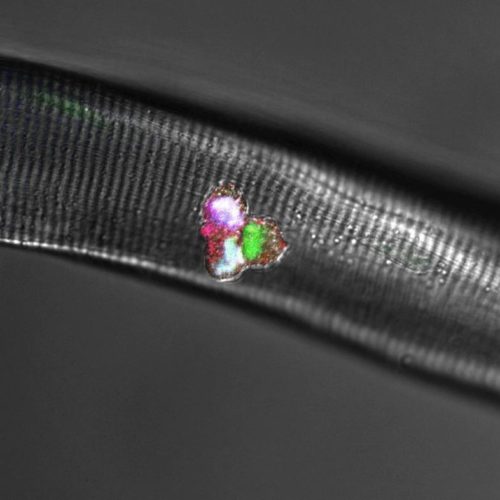By The Washington Post 21h ago Washington – Forget the soul, it turns out the eyes may be the best window to the brain. Changes to the retina may foreshadow Alzheimer’s and Parkinson’s diseases, and researchers say a picture of your eye could assess your future risk of neurodegenerative disease. Pinched off from the brain during embryonic development, the...
First-in-Human Clinical Trial to Assess Gene Therapy for Alzheimer’s Disease
Researchers at University of California San Diego School of Medicine have launched a first-in-human Phase I clinical trial to assess the safety and efficacy of a gene therapy to deliver a key protein into the brains of persons with Alzheimer’s disease (AD) or Mild Cognitive Impairment (MCI), a condition that often precedes full-blown dementia. The protein,...
Gene critical to immune cell development identified
Much of the three-dimensional architecture of the genome in antibody-producing immune cells is dependent on a gene called SMC3. When this gene is not working properly it can lead to improper immune cell development and to cancer, by disrupting how DNA is structured inside the cell nucleus, according to a team of researchers from Weill Cornell Medicine....
Study finds ‘Achilles’ heel’ of Crohn’s-linked bacteria
The discovery of an “Achilles’ heel” in a type of gut bacteria that causes intestinal inflammation in patients with Crohn’s disease may lead to more targeted therapies for the difficult-to-treat disease, according to researchers at Weill Cornell Medicine and NewYork-Presbyterian. In a study published in Cell Host and Microbe, the investigators showed that patients with Crohn’s disease have an...
Research reveals how bacteria defeat drugs that fight cystic fibrosis
by University of Montana UM researcher Laura Jennings helped discover a strategy used by bacteria to defeat antibiotics and other drugs used to fight infections caused by cystic fibrosis. Credit: University of Montana University of Montana researchers and their partners have discovered a slimy strategy used by bacteria to defeat antibiotics and other drugs used to combat infections...
Scientists inactivate SARS-CoV-2 by ‘tricking’ it with peptides
Share on Pinterest New research suggests a peptide-based nasal spray could inactivate SARS-CoV-2 before it infects cells. Karl Tapales/Getty Images Previous research has shown SARS-CoV-2 causes an infection in a person by entering the body and binding its spike proteins to ACE2 receptors on a cell’s surface. Researchers have designed peptides that resemble the ACE2 receptors targeted by the viral spike proteins....
Inhalable nanobody shows potent anti-SARS-CoV-2 activity in vivo
By Dr. Ramya Dwivedi, Ph.D. Feb 26 2021 Vaccines against severe acute respiratory syndrome coronavirus 2 (SARS-CoV-2), the causative agent of coronavirus disease 2019 (COVID-19), are being administered worldwide. A successful, safe and targeted therapeutic drug to treat this infection is yet to emerge. Convalescent plasma, repurposed antivirals, neutralizing monoclonal antibodies, and highly selected nanobodies...
Taking new steps with artificial platelets
Case Western Reserve’s Anirban Sen Gupta leads team to advance bioinspired nanotechnology to enhance blood clotting to stop severe traumatic bleeding. A team of researchers, led by biomedical engineering professor Anirban Sen Gupta is working toward innovating and advancing platelet-inspired nanotechnology systems to treat severe bleeding in surgery and trauma. The National Institutes of Health (NIH)...
The key to proper muscle growth
MAX DELBRÜCK CENTER FOR MOLECULAR MEDICINE IN THE HELMHOLTZ ASSOCIATION IMAGE: Immunofluorescence analysis of a group of proliferating stem cells associated with a muscle fiber (grey). The stem cells produce Dll1 (red) and MyoD (green). Two of the cells produces MyoG (blue): They are differentiating to form a new muscle cell. Note that the overlay...
MicroRNA testing of healthy kids could provide a window on future heart and kidney health
THE MOUNT SINAI HOSPITAL / MOUNT SINAI SCHOOL OF MEDICINE New York, NY (February 26, 2020) – Molecules called microRNAs (miRNAs) that are measurable in urine have been identified by researchers at Mount Sinai as predictors of both heart and kidney health in children without disease. The epidemiological study of Mexican children was published in February in...









